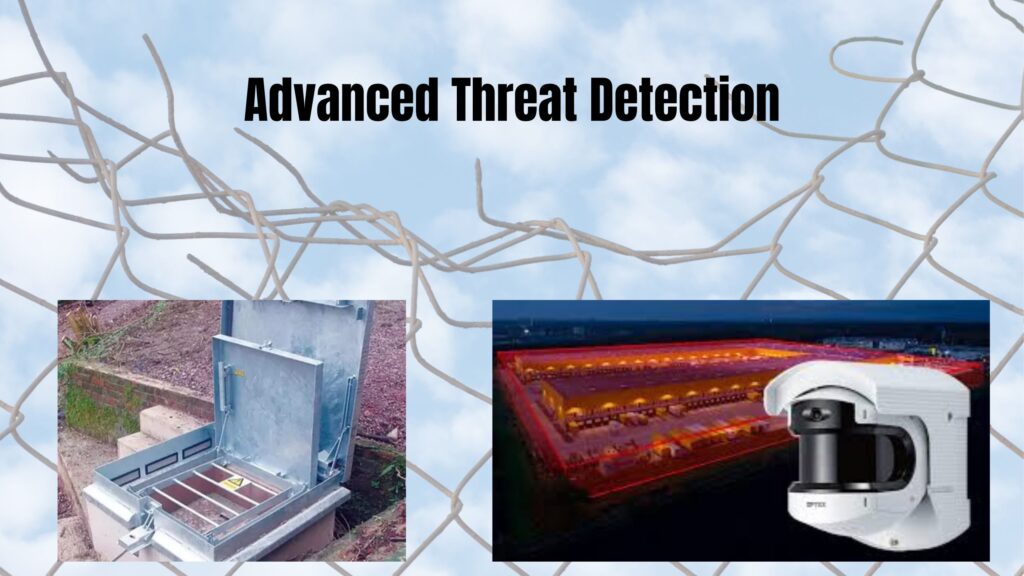
Security threats are becoming more sophisticated, forcing the industry to move beyond conventional detection methods. Two companies at the forefront of this evolution—Optex and Harper Chalice—have taken different approaches to the same challenge: identifying and responding to threats before they escalate. While Optex leverages LiDAR technology with its REDSCAN Pro to create a high-resolution detection field, Harper Chalice focuses on modular, multi-sensor solutions such as HatchSecure and Maxiris. Each has strengths and limitations, making them suited for different environments and security strategies.
Optex: LiDAR for Precision and Depth Perception
Optex’s REDSCAN Pro uses LiDAR to create an invisible detection zone up to 100 metres long. Unlike traditional systems that rely on cameras or motion sensors, LiDAR isn’t affected by poor lighting or adverse weather, making it highly reliable in both indoor and outdoor environments. Its ability to distinguish between real threats and non-threatening objects—such as wildlife or environmental disturbances—helps to reduce false alarms.
However, while REDSCAN Pro excels in precision and reliability, it is not a standalone security solution. It requires integration with a video management system (VMS) or physical security information management (PSIM) to provide actionable intelligence. For sites that already rely on a strong security network, REDSCAN Pro enhances threat detection; for those without an existing infrastructure, the cost and complexity of implementation could be a drawback.
A UK critical infrastructure site recently transitioned from fence-mounted perimeter intrusion detection systems (PIDS) to REDSCAN Pro after struggling with excessive false alarms. By pairing it with video analytics, the site significantly reduced false alerts while improving detection accuracy—an example of how the right combination of technologies can make a measurable difference in security operations.
One of the most compelling aspects of REDSCAN Pro is its integration with AI-driven analytics. By feeding precise object detection data into AI-enhanced security platforms, it enables intelligent tracking and response. This synergy between LiDAR and AI helps security teams predict and assess threats more efficiently, reducing reaction time and improving overall situational awareness.
Harper Chalice: Modular Solutions for Versatility
Harper Chalice’s approach focuses on adaptability. Its HatchSecure system, which received NPSA approval in 2024, fills a critical gap in security by detecting unauthorised access through hatches, an area often overlooked in traditional perimeter security. This system integrates seamlessly with existing intrusion detection systems (IDS), making it an appealing option for utility providers and other critical infrastructure sites.
In addition to HatchSecure, Harper Chalice’s Maxiris infrared barriers offer another layer of protection, particularly in environments where fences are impractical. The system’s modular design allows for rapid deployment, with detection columns placed up to 100 metres apart. Unlike REDSCAN Pro, which relies on advanced LiDAR, Maxiris uses active infrared technology to create a multi-layered security net.
The strength of Harper Chalice’s solutions lies in their flexibility. By combining multiple sensor types, they provide a customisable approach to perimeter security. However, their effectiveness depends on correct installation and calibration. Unlike LiDAR-based detection, which automatically filters out irrelevant data, Harper Chalice’s systems require precise configuration to avoid false positives.
Harper Chalice has also integrated AI-driven analytics into its security solutions. According to Adam O’Reilly, Managing Director of Harper Chalice, “AI plays a crucial role in modern threat detection by allowing us to refine alarm validation and improve response accuracy. By leveraging AI, we can reduce false positives and enhance real-time decision-making, ensuring that our systems detect only genuine threats.”
A large utility provider recently adopted both HatchSecure and Maxiris to reinforce its security infrastructure. The integration of these systems allowed for improved monitoring and response coordination, demonstrating their value in layered security setups. While these solutions enhance detection, they rely on trained security teams to interpret and act on alerts efficiently.
Choosing the Right Technology for the Threat Landscape
Comparing Optex and Harper Chalice highlights the broader challenge in security: balancing precision with adaptability. Optex’s REDSCAN Pro is highly effective for sites requiring pinpoint accuracy, particularly in locations where false alarms have been an issue. On the other hand, Harper Chalice’s modular approach is ideal for organisations needing scalable, multi-layered security without a reliance on high-tech data processing.
The growing role of AI in security is also a factor in decision-making. AI-enhanced detection can refine threat analysis, minimising unnecessary alarms and allowing security teams to focus on actual risks. While Optex’s REDSCAN Pro benefits from AI integration through object classification and tracking, Harper Chalice’s AI-driven approach ensures that multi-sensor configurations deliver actionable intelligence without overwhelming operators with false alerts.
Ultimately, the choice between these technologies depends on the specific requirements of a site. Facilities with established security infrastructure may benefit from integrating REDSCAN Pro for enhanced detection, whereas those requiring broader, more adaptable coverage may find Harper Chalice’s solutions a better fit. Security is rarely a one-size-fits-all endeavour, and as threats evolve, so must the tools used to counter them.







